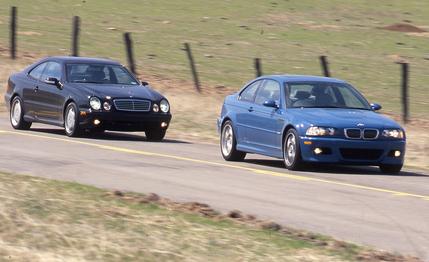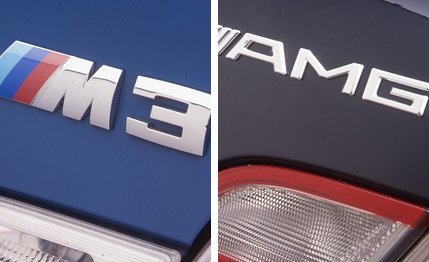
 Comparison Tests
Comparison Tests
Cars such as BMW's M3 and Mercedes-Benz's CLK55 AMG reflect their respective companies' technical virtuosity in a hard-fought, high-price segment. This is not just about quarter-mile times or horsepower per liter. This is about prestige, image, style, elegance, and how well a car can integrate luxury, comfort, and performance.
In this segment we want to have our cake and eat it, too. And it should be the best cake money can buy. Inevitably, the price per slice has been creeping up. The Laguna Seca Blue BMW M3 that was flown out for our taste test is priced at almost 50 grand once you've added in the leather upholstery, in-dash CD player, and sunroof found on our car.
Think that's rich? A Mercedes-Benz CLK55--the M3's arch rival from Stuttgart (Mercedes builds the body, and AMG installs the drivetrain and suspension)--tallies $71,114 with a K2 option package that adds a car phone and six-disc CD changer to the already comprehensive equipment list.
There's no doubt that both the M division and AMG have raised the stakes in this game, producing high-quality conversions embodying breathtaking performance enhancement, meticulous chassis development, and stylish wheel and body modifications.


There's also little doubt that the drive toward such common goals as noise and vibration reduction, enhanced safety, drivability, and better emissions and fuel-consumption performance have led to inevitable similarities in the two products. We've observed that BMW and Mercedes influence each other in corresponding ways because of their shared marketplace.
BMW, it seems safe to say, has driven Mercedes on a quest for sportier performance and a more colorful driver experience. Conversely, it is thought that Mercedes pushes BMW in search of more refinement and comfort. It's clear that these engineering imperatives are on a converging arc, perhaps threatening to merge the personalities of cars from both companies in a uniform expression of German automotive excellence.
But if that were happening, we'd surely see it first in the two companies' most expressive products. Such as in the pair of cutting-edge, autobahn-eating coupes we see here. But, as you'll soon see, these two cars reflect quite different approaches to meeting the needs of the world's most discerning consumers.